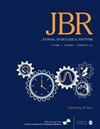Modern Language for Modern Circadian Biologists: The End of the "Slave" Oscillator.
IF 2.9
3区 生物学
Q2 BIOLOGY
引用次数: 0
Abstract
323 As I sat at the computer in my living room, I was not entirely shocked at the words on the slide before me. In the spring of 2021, I was in a graduate-level course on neuronal circuits and behavior; I usually attended the virtual class from home before heading into the lab to continue my research on the role of intrinsically photosensitive retinal ganglion cells on circadian behavior. Naturally, I was thrilled to get to the circadian biology lectures. That day, we discussed the role of the “master” clock in regulating “slave” oscillators throughout the body. As circadian biologists, it’s not unusual to encounter these terms, but that doesn’t mean we should continue using them.1 In his early work, Colin S. Pittendrigh, often dubbed the founder of circadian biology, discussed the light-sensitive A-oscillator and autonomous B-oscillator (Pittendrigh et al., 1958). His co-author on this 1958 paper, Peter Kaus, was a physicist credited with providing mathematical expertise for Pittendrigh’s work. The emergence of the circadian “slave oscillator” appears to originate with Kaus in 1976 (Kaus, 1976), and was likely born from the electronics field where the term had been used since at least the 1940s (Alsberg and Leed, 1949). Master-slave terminology likely caught on because it was an “easy” metaphor, and at the time, “there were few Black engineers to object,” says ethno-mathematician Ron Eglash (All Together, Society of Women Engineers, 2020). Over the past 50 years, generations of circadian biologists have been taught these terms, and their use should not be a source of individual blame. However, we scientists have a duty to overcome the role science has played in the United States’s continued history of racism2 (Nobles et al., 2022). We are trained in the importance of precise language and leaving a rigorous path to follow. With a new generation of scientists comes new expectations for the way we communicate and conduct ourselves. Eliminating the “slave” oscillator won’t undo years of scientific racism, but perhaps it can be one less reason a prospective student might not come our way. It’s encouraging that it’s already more common to see the phrase “peripheral” oscillator than “slave” oscillator in research articles (Figure 1). Yet it would be remiss to attribute the growth in “peripheral” oscillators simply to changes in societal thinking. Rather, scientific advancements in the 1990s elucidated the autonomous nature of circadian oscillators proposed decades before (Pittendrigh et al., 1958). Isolated neurons were shown to retain circadian rhythms in culture (Michel et al., 1993; Welsh et al., 1995), and circadian oscillations (e.g., rhythmic clock gene expression) were found widespread throughout the periphery (Balsalobre et al., 1998; Plautz et al., 1997; Zylka et al., 1998). As such, a modern hierarchical view of circadian rhythms features a coordinating “pacemaker” rather than a vague, all-powerful “master,” and rightfully recognizes “slave” oscillators as autonomous “peripheral” oscillators.3 Nevertheless, more than a dozen articles using the outdated language are still published every year, and prospective circadian biology students continue to sit in lecture halls where the term is used. Given the prolific nature of these concepts, students may need to learn that peripheral oscillators used to be called “slave” oscillators, so they can comprehend older publications; however, we must encourage alternate terminologies be used (e.g., central/peripheral, primary/secondary, leader/follower), as these are not only less problematic, but more accurate. Altering the many articles and books already published using master-slave terminology would be a daunting, though not impossible, feat (All Together, Society of Women Engineers, 2020). More critical is that those in positions of authority modernize our field moving forward. Calls for more 1152982JBRXXX10.1177/07487304231152982JOURNAL OF BIOLOGICAL RHYTHMSBerezin / END OF THE SLAVE OSCILLATOR editorial2023现代昼夜生物学家的现代语言:“奴隶”振荡器的终结。
本文章由计算机程序翻译,如有差异,请以英文原文为准。
求助全文
约1分钟内获得全文
求助全文
来源期刊
CiteScore
6.10
自引率
8.60%
发文量
48
审稿时长
>12 weeks
期刊介绍:
Journal of Biological Rhythms is the official journal of the Society for Research on Biological Rhythms and offers peer-reviewed original research in all aspects of biological rhythms, using genetic, biochemical, physiological, behavioral, epidemiological & modeling approaches, as well as clinical trials. Emphasis is on circadian and seasonal rhythms, but timely reviews and research on other periodicities are also considered. The journal is a member of the Committee on Publication Ethics (COPE).

 求助内容:
求助内容: 应助结果提醒方式:
应助结果提醒方式:


